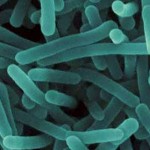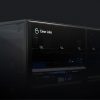How Does Sample Preparation Differ Between PCR & LAMP?
Post-incubation sample preparation for both PCR and Isothermal chemistries must meet two criteria: Make the DNA available for amplification and remove any components that may interfere with the chemistry of the downstream detection method. In the context of food pathogen testing, the extraction of DNA is rarely an issue; it’s the removal of the interfering PCR inhibitors that typically pose the greatest challenge. Much work has been done to document the nature of PCR inhibitors and their mechanism of action.15 This information has led to a co-evolution of PCR reagents and assay design parameters over the years. Today, we have PCR chemistries that can work with essentially “universal” sample prep method.16, 17, 18, 19, 20, 21 This has done nothing short of revolutionize the workflow while ensuring optimal assay performance with minimal sample manipulations. Isothermal chemistries, including LAMP, continue to lag behind in this area. The lack of controlled reaction makes it aberrant to work with various kinds of food matrices such that they may work robustly with one matrix and would not with the next. More often than desired, sample prep methods have to be adjusted for compatibility, or contingencies are built into the “unified” sample prep to account for these aberrations, making them more complex than desired. For the time being, the isothermal sample prep workflow is expected to remain multi-step and nuanced. A natural consequence of this for the end user translates to inconsistent results.
Key Takeaways:
- Removal of interfering components is essential in sample preparation
- PCR has evolved dramatically to address inhibitors and now offers robust “universal” solutions for easy and efficient sample preparation
- Isothermal is still developing in this area, and currently requires many adjustments to optimize sample preparation based on the matrices tested
Food Industry Applications: Which is Best Suited?
Among the molecular methods, both PCR and Isothermal technologies have a place and will continue to shape the food safety industry. The evolutionary genesis of these technologies can provide clues into the specific suitability for the different stakeholders within the food industry. PCR has come a long way. Over the years, many users have reported on its strengths and shortcomings, and a continuous development path has led to reliable technology that continues to be a benchmark for the molecular detection technologies. Other adaptable and advanced capabilities, like dynamic IAC inclusion, multiplexing, proven compatibility to peripherals like robotics for high throughput testing, adaptation for POCT, and easy access will continue to make PCR a favorable solution in the foreseeable future. Isothermal amplification technologies, including LAMP, provide interesting opportunities in non-conventional test environments, presenting viable alternatives for non-complex matrices, especially in the low-resource environments. However, with a deeper look, it is not hard to see that the isothermal chemistries are still grappling with the similar technical issues that beleaguered PCR more than a decade ago. From a tangential view, with the recent advancements and shift-in-focus to the “-omics” technologies, it can be argued that the need to develop or improve on other PCR-like technologies is likely going to take a back seat.
Key Takeaways:
- PCR has the advantage of decades of evolution and improvement allowing for IAC, multiplexing, and ease of use, which for the time being, favor the risk-based industry
- LAMP has the opportunity to mimic the advances of PCR in the coming years
As new molecular technologies are ever emerging, the food safety industry is taking a close look at how the applications will impact the safety and integrity of our food supply.
Standard consideration factors such as time to result, validations, sensitivity, and specificity will continue to lead the discussion. However, a deeper look at the chemistry bears scrutiny as well. Amplification efficiency, direct vs. indirect signal detection, and internal amplification control inclusion are also being examined by industry leaders as molecular pathogen technologies continue to evolve.
Peer Review Acknowledgement
Technical review provided by*: Benjamin Bastin, Q Laboratories;Benjamin Howard, Certified Laboratories; and Dr. Leslie Thompson-Strehlow, SGS Vanguard Sciences, Inc.
References
- Navarro et al. (2015). Real-time PCR detection chemistry. Clin Chim Acta., 439, 231-50.
- Malkki Petersdorf. (2012). Genotyping of single nucleotide polymorphisms by 5′ nucleaseallelic discrimination. Methods Mol Biol., 882, 173-82.
- Sobrino et al. (2005). SNPs in forensic genetics: review on SNP typing methodologies. Forensic Sci Int., 154(2-3), 181-94.
- Ruiz-Villalba, A., et al. (2017). Amplification of nonspecific products in quantitative polymerase chain reactions (qPCR). Biomol Detect Quantif., 14, 7-18.
- Senarathet al. (2014). Non Specific Amplification with the LAMP Technique in the Diagnosis of Tuberculosis in Sri Lankan Settings. JTR, 2, 168-172.
- Wang. (2016). Effect of internal primer-template mismatches on loop mediated isothermal amplification. Biotechnology & Biotechnological Equipment, 30(2), 314-318.
- Gadkar et al. (2018). Real-Time Detection and Monitoring of Loop Mediated Amplification (LAMP) Reaction Using Self-quenching and De-quenching Fluorogenic Probes. Sci Rep, 8(1), 5548
- Kimura et al. (2011). Optimization of turn-back primers in isothermal amplification. Nucleic Acids Res., 39, e59.
- Lee et al. (2009). Detection of genetically modified organisms (GMOs) using isothermal amplification of target DNA sequences. BMC Biotechnol, 9, 7.
- Ihira et al. (2008). Loop-mediated isothermal amplification for discriminating between human herpesvirus 6A and B. J Virol Methods., 154, 223-225.
- Tomita et al. (2008). Loop-mediated isothermal amplification (LAMP) of gene sequences and simple visual detection of products. Nat Protoc, 877-882.
- Wong, Yien-Ping & Othman, Shuhaidah & Lau, Yee-Ling & Son, Radu & Chee, H-Y. (2017). Loop Mediated Isothermal Amplification (LAMP): A Versatile Technique for Detection of Microorganisms. Journal of Applied Microbiology. 124. 10.1111/jam.13647.
- Piralla et al. (2017). FilmArray(TM)GI panel performance for the diagnosis of acute gastroenteritis or hemorragic diarrhea. BMC Microbiol, 17(1), 111.
- Buss et al. (2015). Multicenter evaluation of the BioFire FilmArray gastrointestinal panel for etiologic diagnosis of infectious gastroenteritis. J Clin Microbiol, 53(3), 915-25.
- Schrader et al. (2012). PCR inibitors – occurrence, properties and removal. J. Appl Microbiol., 113(5), 1014-26.
- Dutta et al. Matrix Extension Validation Study of the GENE-UP® Salmonella Assay for AOAC PTM. AOAC annual meeting, 2017, Atlanta, GA
- Bird et al. An Independent Evaluation of the GENE-UP® EHEC Detection Method for the Detection of Non-O157 Shiga-toxin Producing Escherichia coli (STEC) and Escherichia coli O157:H7 in Foods. 2017, IAFP, Tampa, FL
- Bird et al. An Independent Evaluation of the GENE-UP Listeria monocytogenes Assay for the Detection of Listeria monocytogenes in Foods. 2017, IAFP, Tampa, FL
- Mathia et al. EN ISO 16140-2 Validation Study of the GENE-UP® PCR Method for the Detection of Listeria sp. in a Variety of Food and Environmental Samples. 2017, IAFP, Tampa, FL
- Dutta et al. Performance Evaluation of a Real-time PCR for the Detection of Cronobacter spp. in Powdered Infant Formula. 2018. IAFP, Salt Lake City, UT.
- Dutta et al. Performance Evaluation of a Real-time PCR for the Simultaneous Detection of Salmonella and STECs in Co-enriched and Wet Pooled Green Leafy Produce. 2018. IAFP, Salt Lake City, UT.
*Technical review provided for scientific accuracy and does not indicate recommendation or endorsement. The opinions and conclusions presented in this article are the sole position of the authors.







